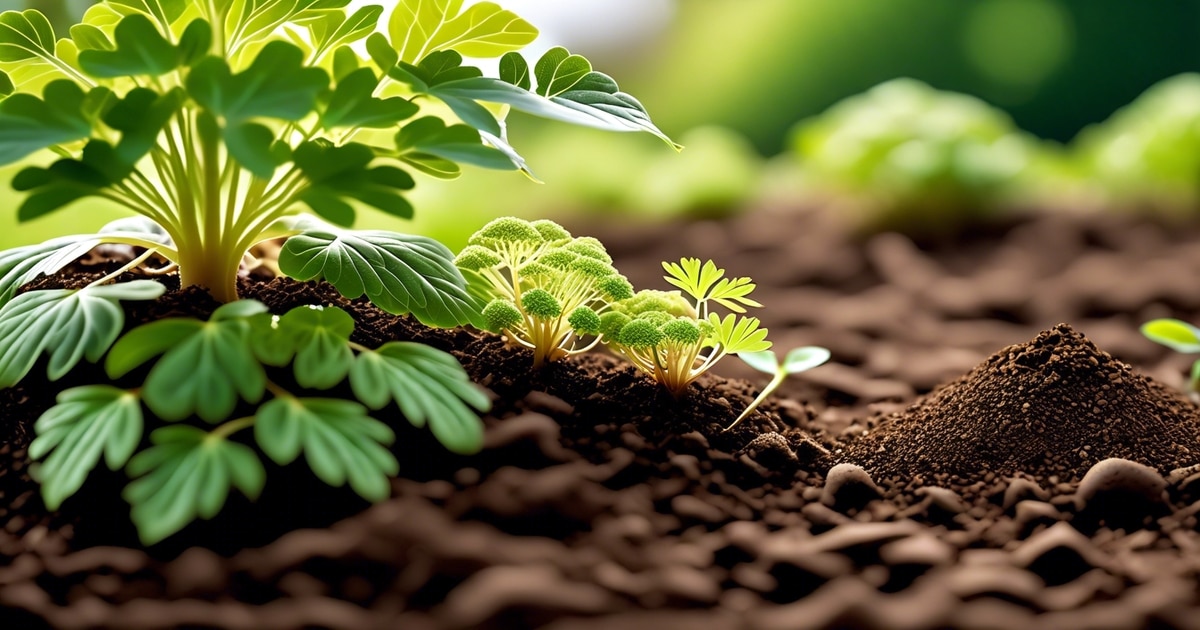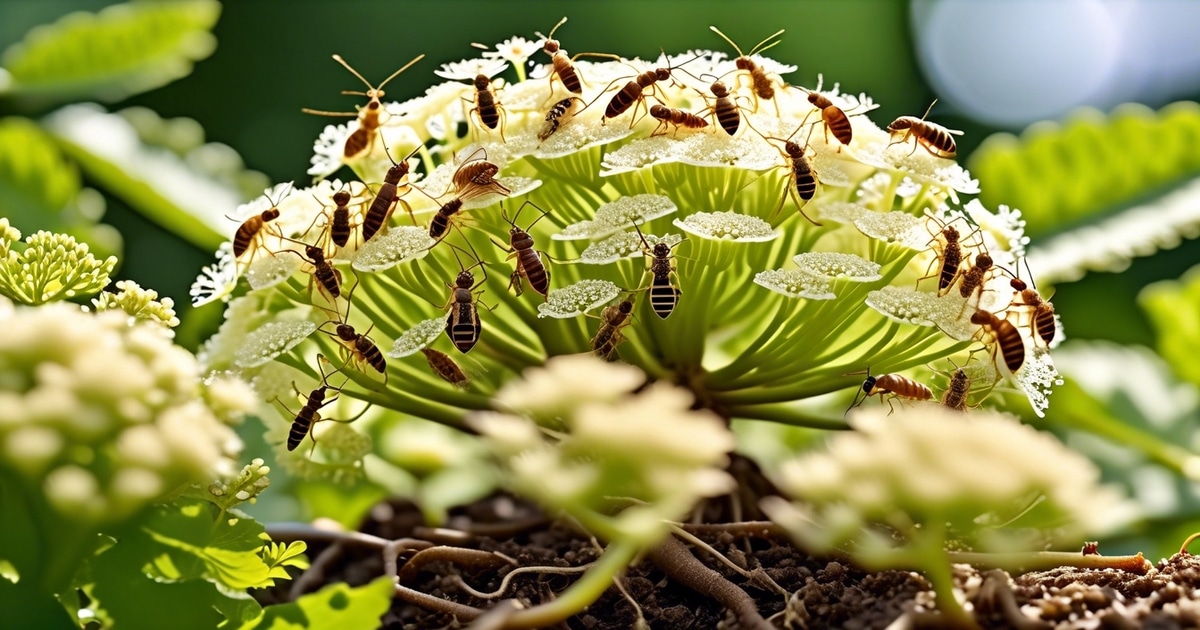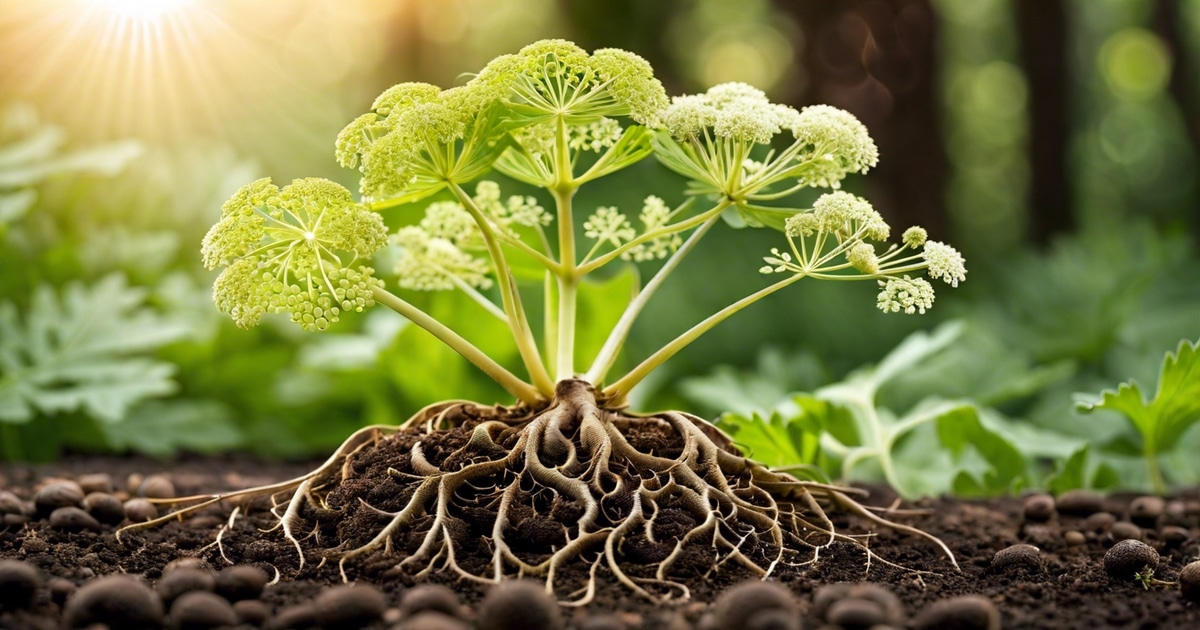Key Takeaways
-
Cultivating angelica in an herb garden requires understanding its family and genus, which can impact its planting and care needs.
-
Knowing the history and origin of angelica, an herb, provides insights into its traditional uses and cultural significance.
-
To cultivate angelica in the garden, consider soil requirements such as well-draining, fertile soil with adequate moisture.
-
Provide angelica plants in the garden with ideal light conditions, ensuring they receive partial shade to thrive optimally.
-
Water angelica plants consistently in the garden, keeping the soil moist but not waterlogged to support healthy growth.
-
When harvesting angelica herb, use proper techniques to ensure plant health and maximize the yield of its beneficial parts.
Ever wondered about the secrets behind successful angelica root cultivation? Are you curious to uncover the tips and tricks for a thriving harvest of vegetables from your garden? Delve into this garden guide, where we unravel the mysteries of angelica root cultivation, from ideal growing conditions to essential care practices. Ready to unlock the potential of your garden with bountiful angelica roots? Let’s dive in!
Understanding the Family and Genus of Angelica
The Apiaceae Family
Angelica root cultivation is part of the Apiaceae family, which includes herbs like parsley and dill. This family is known for its aromatic plants with hollow stems, which are commonly used in culinary and medicinal applications.
Angelica belongs to the genus Angelica, comprising around 60 species worldwide. Among these species, Angelica archangelica is the most widely cultivated due to its versatile uses in traditional medicine and cooking.
Cultivation Methods
When cultivating angelica roots, it’s vital to provide well-draining soil rich in organic matter to support healthy growth. Planting angelica seeds or root cuttings in early spring can yield a bountiful harvest by late summer or fall.
To ensure successful cultivation, maintain consistent moisture levels without overwatering, as excessive water can lead to root rot. Regularly fertilize the garden soil with organic matter such as compost or aged manure to promote robust root development.
The History and Origin of Angelica
Ancient Medicinal Use
Angelica root cultivation has a deep-rooted history in northern Europe and Asia. Wild angelica has been valued for its medicinal benefits since ancient times.
Historically, the plant was revered for its healing properties and was known as an “angelic herb” due to its perceived ability to ward off evil spirits. Various cultures extensively used it to treat ailments.
The introduction of angelica plants to Europe is believed to have occurred during the Viking era. The Vikings are thought to have brought this beneficial herb from their expeditions in northern regions.
-
Pros:
-
Rich historical significance
-
Medicinal benefits
-
Cons:
-
Requires specific growing conditions
Soil Requirements for Successful Angelica Cultivation

Optimal Soil Conditions
Angelica root cultivation thrives in well-drained soil rich in organic matter, ensuring the roots have enough space to grow. The plant prefers a slightly acidic to neutral pH level, ideally between 6.0 and 7.0, providing an environment conducive to growth.
Growing angelica in moist garden soil that allows water drainage is crucial for healthy development. The garden soil should be loose and fertile, promoting root growth and nutrient absorption. Sowing angelica seeds directly into the garden where they will grow ensures better plant establishment.
Depth and Positioning
When sowing fresh angelica seeds in the garden, ensure they are placed at the right depth – typically just beneath the soil surface or lightly covered with a thin layer of dirt. This positioning helps facilitate germination without hindering seedling emergence.
Ideal Light Conditions for Growing Angelica
Sunlight Needs
Angelica plants thrive in full sun or partial shade, requiring at least 6 hours of sunlight daily. While they can tolerate some shade, heavily shaded areas might result in fewer flowers.
Angelica’s growth in the garden is optimal when exposed to adequate sunlight throughout the day. The plant’s ability to produce abundant flowers and healthy foliage in the garden directly correlates with the sunlight it receives.
Shade Tolerance
Even though angelica prefers full sun, it can still grow in partially shaded locations. However, if grown in too much shade, the plant may not reach its full potential and could have stunted growth or reduced flower production.
In a garden setting where other taller plants provide partial shade during certain times of the day, angelica can still flourish as long as it receives enough direct sunlight overall.
Watering Guidelines for Angelica Plants
Consistent Moisture
Angelica root cultivation requires consistent moisture in the soil to thrive. However, it’s crucial not to overwater the plants as this can lead to root rot. To maintain the right balance in your garden, ensure the soil is moist but not waterlogged.
Angelica plants should be watered deeply to prevent garden issues like wilting or dehydration. Depending on weather conditions and the moisture level of the garden soil, aim to water your angelica plants once or twice a week. This frequency will help sustain their growth and development effectively.
Monitoring Soil Moisture
Regularly monitor the soil moisture levels in your garden where your angelica plants are growing. Check if the top layer of garden soil feels dry before watering again; if it does, it’s time to provide more hydration. By staying attentive to these cues in your garden, you can ensure that your angelica plants receive adequate water without excessive dampness.
Harvesting Angelica: Tips and Techniques
Peak Potency
Angelica root cultivation involves harvesting the roots in their second year to ensure peak potency. This is when the roots have accumulated the highest concentration of beneficial compounds, making them most effective for various uses.
When angelica plants in the garden reach their second year, cutting the stems just above ground level is crucial. Doing this during the early morning hours in the garden is ideal as the plant’s moisture content is higher at this time, aiding in easier cutting and preserving freshness.
Optimal Timing
Harvesting angelica roots requires precision regarding timing. It’s essential to wait until the plant fully matures in its second year before beginning the harvest process. Waiting for this specific timeframe in your garden guarantees you the most potent and flavorful roots possible.
To get quality angelica roots, ensure they are harvested before flowering begins. Flowering signals a shift in energy towards producing flower heads rather than robust root growth. Therefore, avoiding harvesting during or after the flowering season secures superior-quality roots for your intended use.
Common Pests and Diseases Affecting Angelica

Common Pests
Aphids and caterpillars are common pests that can harm angelica plants. These pests feed on the plant’s leaves in the garden, causing damage to its growth. Aphids suck the sap from the garden plant, while caterpillars chew through the leaves.
-
Aphids and caterpillars in the garden can be controlled by natural predators like ladybugs or by spraying insecticidal soap on the plants.
-
Regularly inspecting angelica plants in the garden for signs of pest infestation is crucial to prevent extensive damage.
Powdery mildew and root rot are two prevalent fungal diseases that affect angelica plants. Powdery mildew appears as a white powdery substance on the leaves in the garden, hindering photosynthesis. Root rot attacks the plant’s roots, leading to wilting and decay.
-
To prevent fungal diseases in the garden, avoid overhead watering, creating a damp environment favorable for disease development.
-
Proper spacing in the garden between plants promotes air circulation, reducing humidity levels that contribute to fungal infections.
Medicinal Properties and Uses of Angelica
Medicinal Properties
Angelica root cultivation is valuable due to its medicinal properties. The herb has been utilized for centuries as a remedy for various health issues. It is commonly used as a digestive aid, helping with stomach problems and indigestion. Angelica is known for its healing properties in respiratory conditions, aiding coughs and colds.
Angelica also possesses diuretic properties, promoting urine production and assisting in detoxification processes within the body. Moreover, it serves as a natural remedy for menstrual cramps by helping to alleviate the discomfort associated with this condition.
Uses of Angelica
Cultivating angelica roots in the garden opens up a world of possibilities due to its versatile uses. From being brewed into teas to creating tinctures or extracts, angelica can be incorporated into various forms for consumption. Its ability to aid digestion makes it an excellent addition to herbal remedies targeting gastrointestinal issues.
-
Pros:
-
Versatile uses
-
Natural remedy for menstrual cramps
-
Digestive aid
Closing Thoughts
You’ve now got the lowdown on everything Angelica – from its roots to its medicinal wonders. Ready to get your hands dirty and grow some Angelica in your garden? Remember, this game’s key players are soil, light, water, and garden. Keep those pesky pests at bay and watch your Angelica thrive. Don’t forget, a little harvest know-how goes a long way!
So, what are you waiting for? Get out there and start your Angelica journey today! Your garden will thank you, and maybe your health will, too. Happy planting!
Frequently Asked Questions
What is the significance of understanding the Family and Genus of Angelica?
Understanding the family (Apiaceae) and genus (Angelica) of Angelica provides insights into its botanical characteristics, growth habits, related species, and garden. This knowledge helps cultivate Angelica successfully in the garden by tailoring cultivation practices to its specific requirements.
Why is it important to know the history and origin of Angelica?
Knowing the history and origin of Angelica offers valuable context on its traditional uses, cultural significance, natural habitat, and garden. This information can guide garden cultivation practices by mimicking conditions historically supporting healthy angelica growth.
What are the ideal soil requirements for successful Angelica cultivation?
Angelica thrives in well-draining, fertile soil with a slightly acidic to neutral pH range. It prefers rich organic matter content for optimal growth. Proper soil conditions promote robust root development and overall plant health during cultivation.
How crucial are light conditions when growing Angelica?
Light plays a vital role in angelica growth as it influences photosynthesis, essential for plant energy production. Providing dappled shade or partial sunlight can be beneficial, as excessive direct sunlight may stress the plant. Adequate light levels contribute to healthy foliage development.
What are some watering guidelines recommended for nurturing Angelica plants?
Maintain consistent moisture levels in the garden soil without overwatering to prevent waterlogged conditions that can harm angelicas’ roots. Water deeply but infrequently to encourage deep root establishment while allowing the topsoil to dry slightly between watering sessions.

